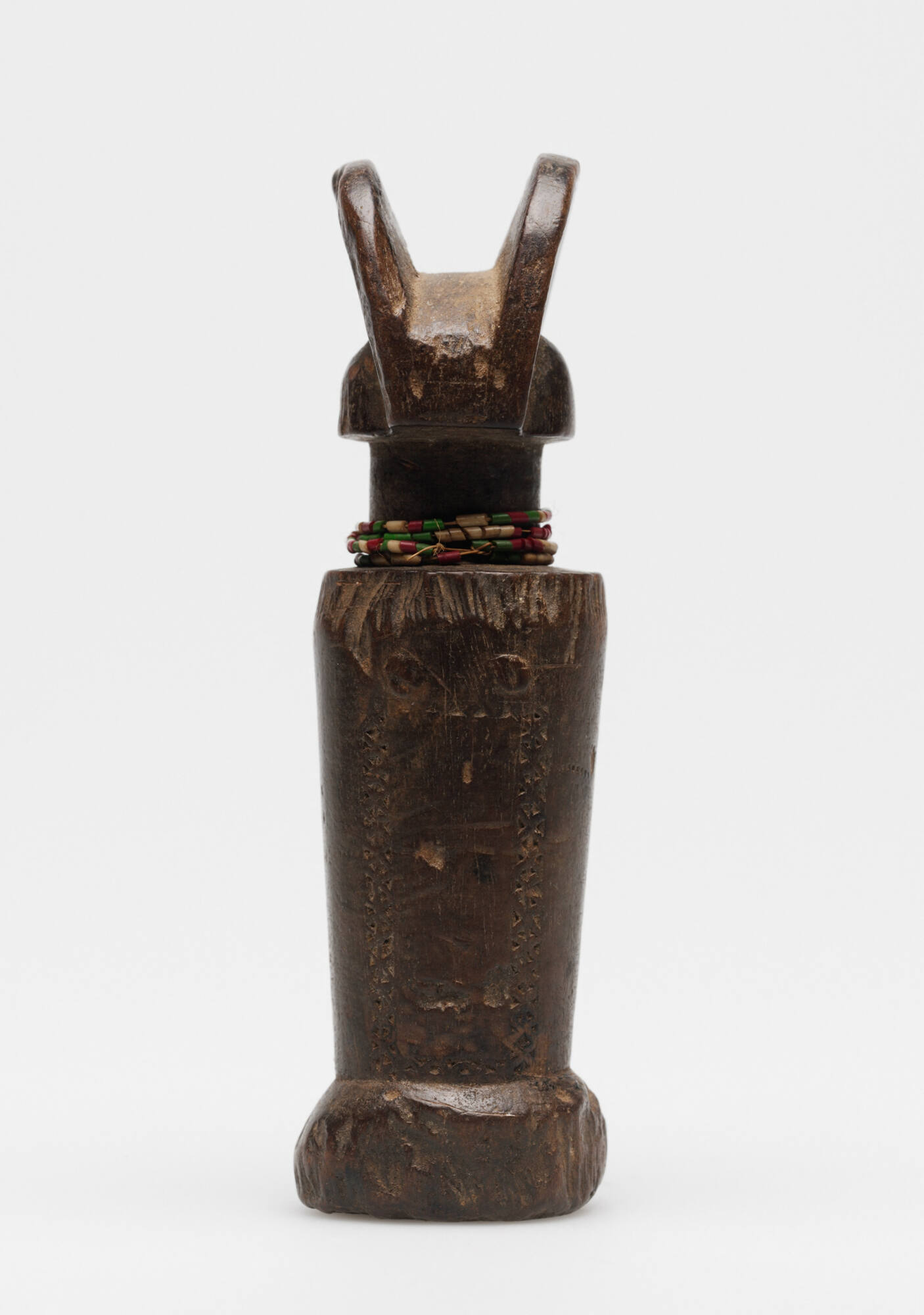
Object Details
Culture
Zaramo (Tanzania)
Medium
Wood
Dimensions
Height: 5 inches (12.7 cm)
Credit Line
Gift of William W. Brill
Object
Number
90.016.048
BRIEF DESCRIPTIONThis is a carved wooden figure from the Zaramo culture in Tanzania.WHERE WAS IT MAD(…)
BRIEF DESCRIPTIONThis is a carved wooden figure from the Zaramo culture in Tanzania.WHERE WAS IT MADE?The Zaramo live in Tanzania.HOW WAS IT MADE?This figure was hand carved from a single piece of wood with tools such as an adze, knives, and chisels.HOW WAS IT USED?Young Zaramo women undergo an initiation seclusion during which time they receive a mwana hiti, “wooden child.” While secluded, the initiate cares for the doll as though it were a real child. When re-entering society, the young woman performs a dance with the doll. If a young married woman has difficult conceiving a child, she will wear the mwana hiti on her back like a surrogate child, hidden from public view, until she conceives.WHY DOES IT LOOK LIKE THIS?Notice the double-wedge coiffure; this hairstyle is an ideal old-fashioned type and no longer worn by Zaramo women, although it is a typical feature of mwana hiti. The owner of the doll might attach her own hair through holes in these wedges.The mwana hiti represents both sexes; its overall form is phallic, yet its decorations of beads, shells, or bits of fabric are female.












